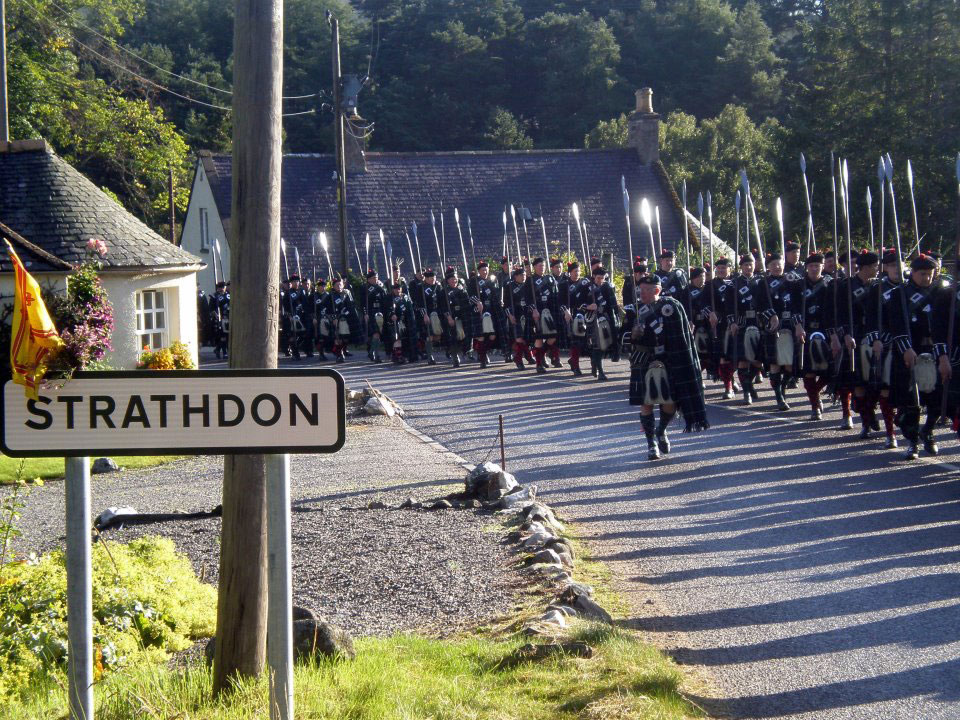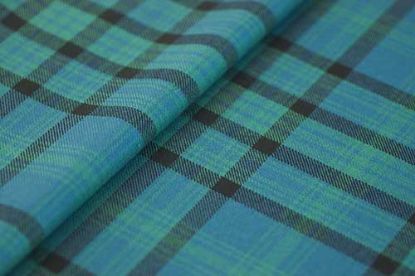The preservation of the kilt - and indeed the tartans from which it is fashioned - can be laid at the door of a series of lucky happenstances: historical coincidences that have preserved, promoted and embellished a way of life and a mode of dress that caught - and still catches - the imagination of the world. Even during the 1747 - 1782 ban on the wearing of ‘Highland garb’ - which only applied to the Highlands of Scotland and not to whole country - tartan was being produced in the lowlands and government established Highland regiments were proudly wearing it and endorsing and strengthening the traditional reputation of the Highlanders as one of the most formidable fighting forces in the world.
That vital military element paved the way for the rehabilitation of tartan into polite society and the corridors of power in the London. Sir Walter Scott’s classic romantic novels on Scotland had attracted an eminent royal fan - none other than George IV himself. Scott - together with Stewart of Garth - was given the task of organising and setting the scene for George IV’s 1822 visit to Edinburgh which unleashed a brilliant tartan extravaganza that was greeted with enthusiastic - and it is reported - tearful, royal approval.
That in turn created a climate of mild tartan hysteria which smoothed the path of the Sobiseki Stuarts (alleged grandsons of Bonnie Prince Charlie) and their largely fictitious, but avidly embraced, Vestiarium Scoticum. A brilliantly inventive work which offered a tranche of predominantly bogus designs to a host of tartan-hungry families, eager to join the privileged social ranks of their fellow countrymen in the Highlands.
The savage Highlander of only a century before who, for fear of the ‘law’, would often travel no further south than the border town of Crieff, had miraculously been transformed into an heroic and noble patriot. The public love of him and his mountains, glens and lochs was the catalyst for Victoria and Albert’s love affair with her northern dominion that lasted a lifetime and was bequeathed to her present-day descendants.
 |
Lonach Highlanders marching through Strathdon, Aberdeenshire. |
But how does this explain the enduring popularity of Scotland around the world? One possible explanation is to look at the great romantic warriors of history - Vikings, Cossacks, Zulus, Samurai, North American Indians, Scottish Highlanders. Who out of those is still with us in instantly recognisable form? Who can we see walking down Edinburgh’s Princess Street or round the tents at major Highland games in a dozen countries around the globe? The modern equivalent of the Scottish Highlander of course and the essential ingredient of that identikit icon is none other than . . . the kilt!
The modern love of the kilt and of all things Scottish is very much more complex than a liking for a picturesque Highland outfit. In addition to the estimated 40 million-strong Scottish Diaspora, there are very many more millions of global citizens who wish to be associated with Scotland. In an increasingly homogenised and dangerous world where national boundaries disappear and linguistic and ancient legacies are diluted, following
the historical pop-star that is Scotland provides comfort and excitement. Fans can bask in the warmth of the many attributes rumoured to belong to we egalitarian Scots — hardworking, tenacious, brave, moral, adventurous, romantic, nonconformist . . . and just that little bit dangerous. . . which brings us back to the kilt and what the modern Scot or wannabe Scot, wears or does not wear underneath its tantalising folds. That discussion is for another time and place, but ever since the kilted Scot has ventured abroad, there has been a frisson of excitement amongst the ladies of the land that shows no sign of abating in the 21st century.
Tartan is the only fabric design in the world which allows us to express our individuality, to wear our heart on our sleeve, to show the world that we belong to this clan or come from that country, this province or state; that we attended that school or university, we worship at this church, we served in that military organisation, we support this football team, we ride a Harley Davidson, we work for this company, we attended that conference...the list goes on and on.
Having found a tartan with which we can identify, there’s only way to wear it - as a kilt.
Here’s tae it...wha’s like it!
























